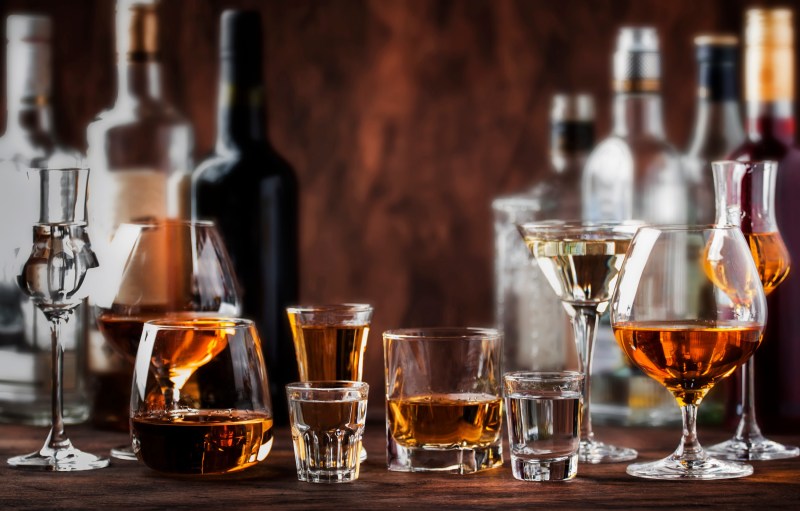
Many things get better with age. In the case of wine and spirits, this notion rings almost universally true. Yet, when we think of the oft-clear liquid that works great with tonic, we rarely think about good sipping gins.
Well, it’s time for a new perspective. While gin’s popularity continues to grow, with domestic producers offering their own unique takes on the aromatic drink, so too do the number of aged options. Granted, aged gin is still relatively obscure but very much worth pursuing.
That’s because the act of resting the stuff makes for an entirely different gin-drinking experience. After some time in the barrel, usually at least a year, the hue changes to amber or brown, the flavors deepen, and the mouthfeel softens. If you didn’t know any better, you might think you were enjoying a fragrant, high-end Scotch.

What is barrel-aged gin?
As advertised, barrel-aged gin is gin aged in the barrel. But to what extent? There’s a lot in the details, from the time the spirit spends resting in wood to the type of wood used. The aging process itself rounds out the profile of the gin, softening the edges and inviting more balance and improved mouthfeel.
Just as tends to be the case when you age a rum, whiskey, or wine, the extra time yields added approachability and complexity — something that can be especially appealing with gin as some of the un-aged options can be a bit abrasive. Anybody who’s compared moonshine or un-aged whiskey with the actual stuff knows the many merits of some time on wood.
Over time, those pungent qualities — think juniper, citrus peel, the heat of the alcohol — become more integrated. Flavors may be imparted from the wood itself (especially if it’s an old spiced rum barrel or the like), typically oak, and sometimes charred to different levels. Most traditional gin at least rests in stainless steel prior to bottling. Aging the spirit adds extra layers, the bright zap of the spirit giving way to darker notes and flavors like oak and toffee.

Brands to look out for
There are some great options to put on your radar and some bigger brands on the cusp of releasing versions we’re excited to try.
- Look out for Barr Hill’s exceptional take, dubbed Tom Cat, made with local honey in Vermont and offering a kick of dried cinnamon on a lengthy and enjoyable finish.
- Ransom makes an exceptional version, rich and round, with notes of candied fruit and spice.
- Also of note is the Prosperous & Penniless Barrel-Aged Gin from Calistoga Depot Distillery in the Napa Valley.
- The Botanist has just released a pair of of cask-rested gins, both aged in a mix of American and European oak. Head distiller Adam Hannett says they’ve been exploring the idea since 2010. “With over 200 cask types available to us in the Bruichladdich warehouses, it was only a matter of time before we started experimenting with aging our gin in a variety of interesting casks,” he says.
Hannett says their aged gins are inspired by another spirit. “Our cask-aged gin is inspired by añejo tequila and has been aged for a minimum of three years,” he says. “Cask Rested Gin is inspired by reposado and has been aged for a minimum of six months.” He says the former has enhanced depth and complexity, perhaps influenced by some barrels that formerly held rum as well as Sauternes. The Cask Aged Gin “becomes softer on the palette and takes on notes of wood spice while maintaining its signature herbal and citrus notes,” according to Hannett.

How to drink aged gin
First and foremost, try the aged gin neat. Gins that have spent some time on wood are often meant to be enjoyed by themselves. But that’s not to say you shouldn’t play around with an aged gin. The deeper notes tend to do really well in a Negroni or teamed up with ingredients like cider and tea in a good hot cocktail recipe. See how the aged spirit changes a classic like a Bee’s Knees or try it in place of bourbon in an Old Fashioned. If you really want to showcase the spirit but still try the style in a classic gin drink, go with a Martinez.
So get a bottle for your bar cart. You’ll love the versatility of the stuff, a side of gin you probably never imagined before that functions more like a good bourbon or aged rum.
Keep rooting for team gin. We’ve got content spanning from our favorite gins to some great floral gin options to give you a fragrant summery escape. Speaking of fragrant, read about an incredible Japanese strawberry gin that smells like a wild berry patch.
Editors' Recommendations
- Great wine doesn’t have to be super expensive — Pros’ best tips for finding a good, affordable bottle
- You can now pre-order Woodford Reserve’s 2024 Kentucky Derby bourbon and it’s only $55
- 5 fan-favorite budget rum bottles, ranked
- This is what the VSOP designation means on that bottle of Cognac
- Jack Daniel’s latest whiskeys are limited-edition bottles you’ll want to get your hands on



